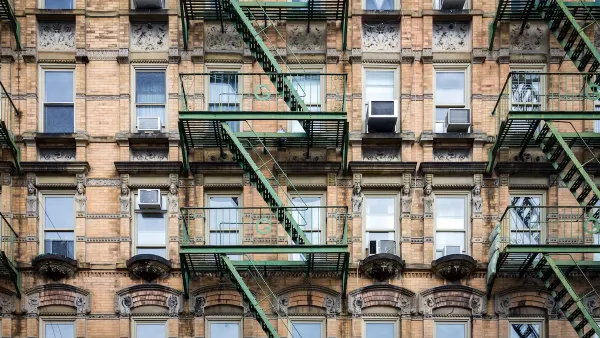Once again, the New York City Department of Transportation (NYCDOT) delightfully surprises the design community with another major leap forward in making city streets a public realm for all users (I can’t tell you how odd it still feels to write that). As if the impressive, incessant roll-out of bike lanes, successful implementation of the “Select Bus Service”, and the unprecedented changes to Times Square and its environs weren’t enough to pique the imaginations of New Yorkers used to streets built for cars, NYCDOT has just issued their “2009 Street Design Manual”. Planners and Engineers, get ready for a thrill!
Once again, the New York City Department of Transportation (NYCDOT) delightfully surprises the design community with another major leap forward in making city streets a public realm for all users (I can't tell you how odd it still feels to write that). As if the impressive, incessant roll-out of bike lanes, successful implementation of the "Select Bus Service", and the unprecedented changes to Times Square and its environs weren't enough to pique the imaginations of New Yorkers used to streets built for cars, NYCDOT has just issued their "2009 Street Design Manual". Planners and Engineers, get ready for a thrill!
Don't let the year in the name fool you; if you've endured the rigors of learning the ropes of roadway design in New York City, then you know well enough that such a comprehensive document has never existed to guide the designer through the complexities of one of the most challenging processes known to man (Full disclosure: that might be a slight exaggeration). It is with great joy (and relief) that I can dispense with the ten-times-photocopied half-sheet details and loose collection of materials assembled over the years that substituted for a comprehensive design manual, and share with you a document that stresses the importance of accommodating all modes, offers a broad range of design treatments, and is bursting at the seams with visual examples and precedents from around the world (for illustrative purposes only, of course!).
So don't waste any more time reading my banter, dig into the 2009 Street Design Manual right away and discover the eerily new NYCDOT; it may in fact be the perfect set of guidelines for other cities to adopt in their pursuit of a safer, more balanced public street space. Enjoy!
http://www.nyc.gov/html/dot/html/about/streetdesignmanual.shtml

Planetizen Federal Action Tracker
A weekly monitor of how Trump’s orders and actions are impacting planners and planning in America.

Chicago’s Ghost Rails
Just beneath the surface of the modern city lie the remnants of its expansive early 20th-century streetcar system.

Amtrak Cutting Jobs, Funding to High-Speed Rail
The agency plans to cut 10 percent of its workforce and has confirmed it will not fund new high-speed rail projects.

Ohio Forces Data Centers to Prepay for Power
Utilities are calling on states to hold data center operators responsible for new energy demands to prevent leaving consumers on the hook for their bills.

MARTA CEO Steps Down Amid Citizenship Concerns
MARTA’s board announced Thursday that its chief, who is from Canada, is resigning due to questions about his immigration status.

Silicon Valley ‘Bike Superhighway’ Awarded $14M State Grant
A Caltrans grant brings the 10-mile Central Bikeway project connecting Santa Clara and East San Jose closer to fruition.
Urban Design for Planners 1: Software Tools
This six-course series explores essential urban design concepts using open source software and equips planners with the tools they need to participate fully in the urban design process.
Planning for Universal Design
Learn the tools for implementing Universal Design in planning regulations.
Caltrans
City of Fort Worth
Mpact (founded as Rail~Volution)
City of Camden Redevelopment Agency
City of Astoria
City of Portland
City of Laramie






























